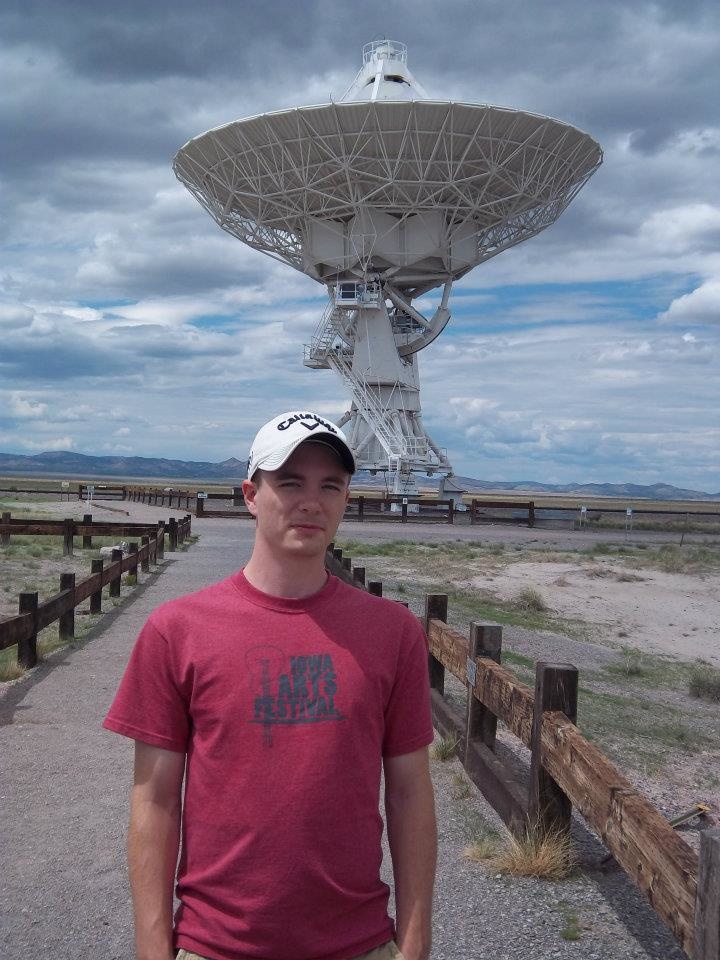
A summer internship spent working on a proposed instrument for a potential mission to explore Jupiter and its moon Europa has resulted in a prestigious scholarship for a University of Iowa undergraduate student.
Patrick Fischer of Lone Tree, Iowa, a double major in physics and astronomy in the UI College of Liberal Arts and Sciences, is one of 11 students nationwide who served as 2012 summer interns at NASA’s Goddard Space Flight Center in Greenbelt, Md., and who were awarded John Mather Nobel Scholarships by the National Space Grant Foundation, Inc.
The award consists of the designation “John Mather Nobel Scholar,” plus a two-year, $3,000 scientific travel grant to present research papers at professional conferences. In addition, recipients meet with John C. Mather, Senior Astrophysicist and Goddard Fellow, and winner of the 2006 Nobel Prize for Physics, and other distinguished individuals.
Fischer says that following his graduation from the UI in 2013, he plans to attend graduate school at an as-yet undetermined institution as the next step in pursuing his research goals.
“I am particularly interested in studying surface/atmospheric processes on planets and moons that hold the potential for habitability, such as Mars, Titan, and several icy satellites of the outer planets,” he says. “I am also interested in developing spacecraft instruments that we use to study these phenomena. Though these worlds may only host microbial life, if any life at all, the discovery of life outside of Earth will be one of the most monumental achievements of humanity. I hope my research contributes to that discovery.”
At the UI, Fischer is an undergraduate research assistant working with professor Steven Spangler in the Department of Physics and Astronomy. He notes that he and Spangler are studying space plasmas, or very thin gases in space, using radio astronomy.
“For example, our current project involves using the VLA (Very Large Array) radio telescope to track a radio galaxy near the sun as a CME (coronal mass ejection) crosses its path. By seeing how the radio galaxy's light changes as the CME crosses in front of it, we will hopefully be able to determine some properties of the CME's magnetic structure, an area in which very little is currently known,” he says.
He adds that the research has the potential to affect the lives of nonscientists, too, because CME's can harm satellites and cause power outages on Earth.
Looking back on his primary and secondary educational experience, Fischer says he had many great teachers, but one encounter, made through books, stood above the rest.
“What influenced me to study science as a profession was reading Carl Sagan's books,” he says. “His perspective on life and the universe is staggering; it's rare to come in contact with an intellect of that magnitude.”
The John Mather Nobel Scholarship Program was established in 2008 by the John and Jane Mather Foundation for Science and the Arts. The program is open to current NASA/Goddard Space Flight Center based undergraduate and graduate student interns. Each year the program awards travel allowances towards the cost of presenting research papers at professional conferences.
Applicants must have demonstrated high academic achievement, have a strong interest in space and Goddard Space Flight Center, be a rising undergraduate junior, senior, or graduate student, and be currently holding a Goddard-based research internship.